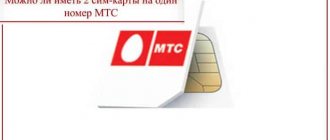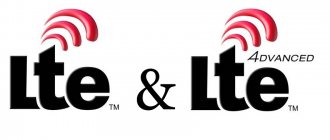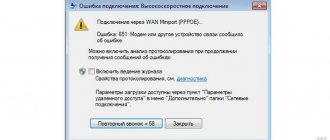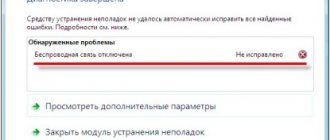Content
The relatively young but actively developing company Yota provides its subscribers with good and high-quality cellular communications and profitable mobile Internet. The operator has a lot of attractive tariffs for various purposes. The number of base stations increases every year, so we can confidently say that the operator is expanding the coverage area of its network. Compared to other giants, MTS, Beeline and Megafon, Yota is considered a young operator. But, despite this fact, using the services of this company is very profitable. To start working with Yota, a subscriber just needs to purchase a SIM card and connect to the optimal tariff plan. Perfect for providing Internet access in the Moscow region.
Yota and MegaFon will merge in the next two years
Illustration by RIA Novosti
The Yota operator, which is currently owned by MegaFon, may fully become part of the parent company in the next two years. The main owner of MegaFon, Alisher Usmanov, said this in an interview with the Rossiya-24 TV channel.
According to him, previously MegaFon and Yota existed separately. Both companies developed progressively. However, it was a little harder for MegaFon, since the market is very competitive, while Yota was expanding its infrastructure.
The next stage will be the merger of these companies into one MegaFon infrastructure. A process will begin when a significant frequency resource, necessary to use a larger volume of information and the speed of its transmission, will play a role in returning the invested funds and receiving a profit from this project.
“Based on today’s market development, I think that in a couple of years we will already have a certain result,” Usmanov added.
MegaFon decided to pay ahead of schedule $1.060 billion under a deal to acquire a 100% stake in Maxiten Co Limited, which owns 100% of the shares, from the Garsdale Services Investment Limited holding in the summer of 2014.
On October 1, 2020, MegaFon paid the remaining 10% of the total cost of the transaction to purchase Scartel to the Garsdale holding. The payment was $120 million plus interest at 6% per annum.
“The federal mobile operator Yota operates on the combined network of Scartel LLC and MegaFon PJSC, providing communication services and unlimited mobile Internet in 2/3/4G networks throughout Russia. Yota has begun the process of integrating its own infrastructure with MegaFon's since purchasing the company in 2013, and this process will continue in the future, allowing both companies to develop intensively. Both parties benefit from this integration by reducing transaction costs, improving network frequency planning, and increasing both network coverage and quality. So, over the last year, Yota began distributing SIM cards for smartphones and tablets in 45 regions of Russia and providing unlimited 4G Internet services in another 32 regions, becoming the most dynamically developing operator in the telecom market. Now you can connect to the Yota mobile operator in 71 regions of Russia, and services are provided throughout the country. (Yota brand) will continue to be a subsidiary of . In the group’s future strategy,” Yota’s press service commented.
Megafon Yota
Yota is a subsidiary of Megafon. But this does not mean at all that they are the same thing. Yota has a completely different specificity and concept, different tariffs and offers. What towers does Yota use? This operator operates on Megafon equipment, but also uses its own base stations. The network coverage areas of both companies are almost the same. The only difference is that in some cities Megafon was able to supply LTE Band 20. But Iota in such areas does not operate on the fourth generation network. The question often arises among users: Which operator's Iota towers are used? Now we know whose towers Yota uses to service its subscribers.
Iota 3G
Experts say that 3G technology can provide high-speed connections of several tens of megabits. Tempting, isn't it? But in reality, this figure rarely exceeds 3-5 megabits, and even then, we are talking only about stationary objects. If the user moves, it is even smaller. This is due to constant changes in the geographic location of the device’s receiving antenna. So what to do? There is only one answer - connect to the Internet Iota.
The maximum Internet speed of Yota with 3G parameters is 5-6 megabits, which allows you to quickly find and download the necessary information on the network. In addition, users can make video calls and watch videos on YouTube in high quality. Having studied the opinions of experts, as well as Iota 3G users, we can confidently say that this tariff is enough for a daily uninterrupted Internet connection. If, for unknown reasons, this is not enough for you, we advise you to pay attention to a high-speed 4G tariff.
How to choose
Megafon and Yota have almost the same network coverage area, but completely different tariff plans. It is impossible to say unequivocally which operator is better and which is worse. With Yota you can always find an unlimited tariff for working on the Internet from a PC, but Megafon does not have a similar offer. According to subscriber reviews, the quality of communication between both companies is approximately the same. Megafon tariffs are indispensable for those users who value the quality of voice communications and need a high-speed connection on their mobile phone. Branded applications are available from both operators. Their use is simple, convenient and accessible.
Applications allow you to:
- Top up your account (for example, money can be transferred from a bank card or use any payment system).
- Control the balance of funds, minutes, SMS and megabytes of mobile Internet.
- Change tariff plan.
- Contact a company representative online with any questions you may have.
At the beginning of its activities, Yota attracted subscribers with the service of delivering SIM cards to their home or office. To connect to the Megafon network, the subscriber needs to go to a cellular communication salon. Megafon and Iota are far from the same thing. Yota focuses on profitable Internet, which can be used on modems and routers.
Internet for tablet
Internet tariffs for tablets from Yota include connection to 3G and 4G networks. The Yota-Tablet tariff is ideal for those who want to get the maximum amount of traffic when using the mobile Internet. Subscribers choose this package for consistently high speed, favorable prices and an unlimited amount of information for downloading in any region of Russia. With it you can download and listen to music and movies online, view pictures in excellent resolution and not worry about limited traffic.
Tariffs from Megafon
Line of tariff plans “Turn on!” has long gained popularity among subscribers and has become in demand.
Below we will look in detail at what the operator offers us:
- “Communicate” is one of the most balanced options in the line. The cost of the service per month is six hundred rubles. This includes a package for five hundred minutes to all numbers in Russia, 12 gigabytes of mobile traffic, unlimited mobile television. This tariff also includes unlimited use of popular instant messengers and social networks. The advantage of this tariff is that it is valid throughout the Russian Federation.
- “Look” - this tariff plan was developed with a focus on those subscribers who, in addition to communication, like to enjoy video content. The monthly tariff costs 900 rubles. The price includes: 16 GB, unlimited YouTube viewing and free use of social networks and instant messengers. 1200 minutes are allocated for voice communication.
- “Speak” is another advantageous offer from the “Turn on!” line. The monthly fee is five hundred rubles. What does this include: 600 minutes, 3 gigabytes, unlimited for instant messengers. A package of mobile television channels can be connected for an additional fee if necessary. This tariff plan operates throughout the Russian Federation and is designed for those subscribers who have little interest in Internet resources.
- “Listen” - this option is optimal for music lovers. The monthly fee is three hundred rubles, which includes 250 minutes for local calls, 6 gigabytes of mobile traffic. You can use popular music services.
- “Write” - the tariff plan is designed for subscribers who need SMS. Monthly fee 350 rub. this includes 350 minutes for local calls, two hundred SMS in the home region, plus the use of instant messengers.
- “Premium” is a comprehensive tariff plan, which is distinguished by a large number of services: 5 thousand minutes for calls within the Russian Federation, use of instant messengers, music services, 20 gigabytes of regular traffic. The subscription fee is impressive and amounts to 3 thousand rubles monthly.
Iota 4G
Each of us has repeatedly encountered advertising slogans of the 4G Internet, which say that the data transfer rate of LTE users is 100 megabits, regardless of the user’s position or activity. That is, you can travel in public transport and use a high-speed connection. But we remember that we live in Russia, and innovative technologies are being introduced here slowly. Therefore, our 4G standards have been somewhat lowered. The maximum Internet speed of Yota 4G in the city is 35 megabits, but this is only a theory. In fact, it turns out to be about 15-20 megabits.
Next, we suggest that you familiarize yourself with the main factors affecting the 4G LTE connection:
- The terrain, as well as the saturation of buildings.
- Distance to the nearest distribution station and signal strength.
- Electromagnetic background.
- Natural factors - rain, snow, strong wind.
- Connection time frames (for example, the connection speed is highest at night).
The connection speed is lowest during the day and evening - this is due to the high activity of users at this time. It is best to connect to the Internet in the morning and at night, then you can count on a high-speed connection.
What Yota offers
The operator divides tariff plans into three categories depending on what device the subscriber will work from: mobile phone, tablet computer and modem (or router). There is one tariff available for smartphones, it is very flexible and can be customized to suit your needs. The minimum monthly fee will be 370 rubles per month. This includes: 200 min. in the Russian Federation, two gigabytes of mobile traffic. A more complete package for 5 thousand minutes and thirty gigabytes will cost the subscriber 2850 rubles/month. Additionally, users can connect a variety of options. For example, for just fifty rubles a month you can get the “Unlimited SMS” option. The parameters of tariff plans in Yota are regulated at the discretion of subscribers.
For tablets there is full unlimited use.
You can pay for the service for:
- One day – 50 rub.
- Month – 500 rub.
- Year – 4500 rub.
The longer the payment period the subscriber chooses, the cheaper the service will be. Traffic is not charged. But it is worth considering that Iota introduces one limitation - you cannot download torrents, otherwise the speed will drop to the minimum level.
The operator also has offers for PCs, these are also unlimited tariffs.
Why Yota is an inconvenient operator, and what can be done better
Very often, when the problems of some operators are discussed, I see that Yota is invariably praised. Basically, all laudatory reviews are limited to approximately one thing - the operator does not have paid subscriptions, and that’s where the advantages end... My post is not a complaint (I know that Habr is not a complaint book), but an analysis of how good ideas can be implemented without too much successful. Please note that here I am considering tariffs for a smartphone, and not for a tablet or modem.
Yota - virtual operator
This means that they use the base stations of the "main" operator, and there is a high probability that the virtual operator's traffic priority (both voice and data) will be lower than that of the main one.
I haven’t heard about any problems with Russian operators, but in the USA very often users of virtual operators complain that the connection is “not very good” compared to the main operator. Solution:
build your networks, for example, in large cities with a large subscriber base.
Choosing a number at Yota is not arranged as usual
When you register for a SIM card, you receive a blank, and you need to activate it and select a number yourself through the application.
That is, you cannot select a number during registration, but this must be done after installing the SIM card and application. By the way, there is another bonus here - after activating the SIM card, Yota gives 2 hours of Internet access to download the application from the market. If you don’t have time, look for Wi-Fi to do it. Solution:
provide the opportunity to choose a number when purchasing a SIM card without the need for any action on the part of the subscriber after that.
Yota does not have a personal account, like all other operators
To manage the number, only the application is used, that is, it will not be possible to perform any operations through the browser (for example, if you want to be able to remotely monitor the balance of a loved one). There is a small set of USSD commands, but I don’t know who will use them now.
Solution:
create a personal account that will be accessible through the Yota website from any browser.
Authorization in the application is only possible with an inserted SIM card
Authorization in the application occurs automatically if a Yota SIM card is installed in the device. On the one hand, this is convenient, but on the other, it brings a bunch of additional problems:
- You cannot log in from another device, only from the one into which the SIM card is inserted;
- if you have several SIM cards in different smartphones or tablets, you cannot log into several accounts at once;
- the app kindly asks you to turn off Wi-Fi if you get logged out (which will happen from time to time), and there's nothing you can do about it. That is, logging in using a password or temporary code from SMS is impossible;
- If you are in international roaming, then to authorize in the application you must enable data roaming. Application traffic is not taken into account, but at this time the smartphone will have time to download something, and Yota will be happy to charge you money. By the way, if you suddenly haven’t paid for the package of minutes and internet, then a megabyte of traffic in roaming will cost from 490 rubles;
- if for some reason your SIM card ended up in someone else’s smartphone, and authorization was carried out in the Yota application, then somehow you cannot log out this login. Some time after removing the SIM card, the application will log out on its own, but before that, on such a device you can do whatever you want with the number, for example, change the tariff or change the number to another.
Solution:
to the current autologin option, add the ability to log in using a password or code from SMS.
Any support from Yota is provided only via chat or SMS to a specific number
There are no other ways (I don’t consider the option of stomping my feet into the operator’s office), therefore, if with other operators you can call on the phone and after a while talk with a live person, then with Yota you will have to communicate only through chat and resolve issues by typing text on keyboard.
I don’t argue that this support option may be more convenient for someone than live communication, but in my opinion it should be an addition to the opportunity to talk, and not the only option. Solution:
make telephone support one of the contact methods.
The price for any Yota tariff is indicated for 30 days, not for a calendar month
This is inconvenient because once every 2 months the payment date moves back.
That is, if you are used to paying for communications every first (or any other) number, then in a year the payment date will move back 6 days. In addition, during the year you will have to pay for 5 extra days compared to the case when the operator charges per month. For the user, paying for these 5 days plays almost no role, but for an operator with a base of many millions of subscribers, this already results in a good increase in the salary of marketers. Solution:
make a tariff with payment per month without shifting the payment date.
There is no way to get call details in the Yota app
In general, there is no way, so if you want to see where the minutes went, you can write to the chat and ask support to send details by email.
However, a surprise awaits you here: technical support does not do this and suggests going to the office to perform this simple operation. Solution:
make details in the application with the ability to view it immediately or send it by email.
Yota tariffs are a perfectionist’s hell
Everyone has long been accustomed to package tariffs: for a certain amount of money you get minutes, gigabytes and SMS. Yota decided to go further, offering the user to choose the content of the tariff himself, and you can specify any number of minutes in increments of 1 minute and traffic in increments of 1 GB. Moreover, in all cases (with very rare exceptions) the subscription fee will be a very “crooked” number, for example 399.57 rubles. in 300 minutes and 20 GB.
I don’t know why this was done, and why it was impossible to take at least 10 steps (or maybe even 50 or 100) in minutes, but it seems to me that this is very inconvenient. I can imagine that a crowd of Yota users is trying to decide whether to buy 326 or 327 minutes in a package.
Solution:
make the selection step for minutes and gigabytes larger than 1, perhaps not even linear, and round up the cost of services to the whole ruble (or better yet, to 10 rubles).
If you insert a SIM card into a tablet, modem or router, the speed will be reduced to 64 kbps
Roughly speaking, there will be no Internet.
I understand (although not completely) when operators put such a restriction on tariffs with unlimited Internet, but with Yota this restriction always applies, including packages with limited traffic. Solution:
If traffic is limited, then the subscriber can decide for himself where to insert the SIM card.
In general, I consider the main disadvantage to be the inability to conveniently use the services without a smartphone and the need to install an application.
Among the advantages, I would like to note that the minutes from the package are spent on all Russian numbers, and not just on numbers in your region, calls within the network are not charged, there is no roaming within the Russian Federation, and a “beautiful” region code 999 is issued.
“Turn on! Listen"
Rejoice, music lovers - this tariff is especially for those who cannot live without music. For a modest 300 rubles per month, subscribers are provided with 250 minutes of local calls, 6 GB of Internet traffic for any needs, and unlimited communication in instant messengers. And the highlight of the program is unlimited access to listening to music through special services.
The supported services include the most popular portals: VKontakte Music, Yandex.Music, BOOM and Zvooq. Anyone who subscribes to this tariff plan will be able to watch unlimited mobile television with a package of operator channels. Naturally, the tariff is valid in all localities of the country, but long-distance calls are charged separately.
Yota entered the war for its 4G frequencies
Telecom
Internet Business Mobile communications Internet access Legislation
08/28/2012, Tue, 13:08, Moscow time, Text: Igor Korolev
Scartel is trying to challenge the court decision obliging the authorities to issue 4G frequencies.
Rostelecom and the MTS-friendly operator Kosmos-TV also filed appeals: all of them are threatened with the loss of frequencies by Summa’s victory. (Yota trademark) filed an appeal against the July decision of the Moscow Arbitration Court made on the claim. Then the court ordered the State Commission for Radio Frequencies (SCRF) to issue frequency bands with a total width of 70 MHz in the range of 2.5-2.7 GHz to Summa for WiMAX technology.
General Director of Scartel Igor Torgov
refused to comment, and Summa Telecom did the same. Previously, in addition to SCRF, a number of other structures that were not defendants in this lawsuit filed appeals. This was done by the Ministry of Communications and Mass Communications, Rostelecom and the wireless television operator Cosmos-TV, which supervises the work of the SCRF. The logic of the companies trying to challenge the court decision in the Summa Telecom lawsuit is obvious: execution of the court decision will entail the loss of their frequency resource for LTE technology (refers to the fourth generation of cellular communications - 4G).
Scartel finds itself in the most dangerous situation. The company owns two frequency bands with a width of 30 MHz, located in the lower and upper parts of the 2.5 -2.7 GHz range. The court ordered Summa to transfer the entire lower band used by Scartel (2500-2530 MHz) and 10 MHz from the upper part (2620-2630 MHz). At the same time, Scartel's remaining 20 MHz of frequencies will become useless: the company uses frequency division division (FDD) technology, which requires the presence of paired frequencies with a difference of 120 MHz.
Rostelecom, if the court decision is executed, will lose all the frequencies it won in July in the range of 2.5-2.7 GHz: 2560-2580 MHz and 2680-2690 MHz. MTS will lose 10 MHz frequencies: 2660-2670 MHz, while the company's remaining 10 MHz frequencies in this range will become useless (the company also uses FDD technology). Let us recall that in July, Rostelecom, MTS, Megafon and Vimpelcom won frequencies for LTE technology: 30 MHz each in the 800 MHz range and 20 MHz each in the 2.5-2.7 GHz range.
Yota, Rostelecom and Kosmos-TV will not give up their frequencies to Summa without a fight
As for Cosmos-TV, this company owns a frequency band 72 MHz wide in the range of 2.5-2.7 GHz, of which 20 MHz overlap with the frequencies claimed by Summa Telecom. Previously, Kosmos-TV had already asked the court to include it as a participant in this case, but was refused. Let us note that, according to last year’s decision of the SCRF, Kosmos-TV is obliged to release used frequencies for LTE operators, receiving in return compensation in the amount of 274 million rubles.
The company itself ceases operations. However, it cannot be ruled out that Kosmos-TV acts in the interests of MTS, since this company is owned on a parity basis by the state RTRS and the controlling shareholder of MTS, AFK Sistema. MTS does not comment on this.
Let us recall that in 2006 Summa Telecom received frequencies in the range of 2.5-2.7 GHz for the construction of a nationwide mobile WiMAX network. The company is part of the Summa holding (formerly Summa Capital) of the Dagestan entrepreneur Ziyavutdin Magomedov
.
The co-founders of Summa Telecom were also top managers of the St. Petersburg group of telecom operators Vladimir Androsik
and
Dmitry Ivanter
.
In 2008, after leaving the post of Minister of Communications Leonid Reiman
Summa Telecom has stopped working with the frequencies allocated to it. In 2010, SCRF finally withdrew the frequencies from the company. However, Summa Telecom unexpectedly began a fight for their return. First, the company won the court, obliging the SCRF to reconsider the application for the issuance of frequencies. SCRF, having considered the application, refused to return the frequencies. This refusal was successfully appealed by Summa in July.
- Lean Manufacturing 4.0
- Short link
Points of sale and technical support
The communication with operators began with the issuance of SIM cards. And the first feature was that on Yota you can order delivery of a SIM card to your home or office. Well, the attempt to justify the status of the first virtual operator is valid. To connect to Megafon, I had to go to a communication store, which, on the other hand, revealed another feature - a Megafon store is much easier to find than Iota.
For the sake of testing communication with technical support, we decided to call both operators on the hotline.
We managed to get to a live operator on Megafon in 4 minutes. A nice girl answered us, who clearly and promptly gave all the information we needed.
It turned out to be more difficult to reach Iota; we managed to contact a technical support specialist only after 12 minutes. The young man answered all our questions clearly and concisely.
However, Yota has another convenient option for communicating with an operator - a built-in chat in the mobile application. We asked a question there and received an answer within a couple of minutes. It's really convenient!
Read about Yota How to transfer money from eta to another operator
Yota tariff for smartphones
We have already talked about the Yota 4G coverage area and the subscriber devices used. Now we need to talk about tariffs. First, let's look at the tariff for smartphones. There is only one, but it is flexible and customizable:
- 200 minutes of calls within Russia and 2 GB of traffic – the subscription fee is 370 rubles/month;
- 500 minutes of calls within Russia and 6 GB of traffic – the monthly fee is 450 rubles/month;
- 800 minutes and 12 GB of traffic – subscription fee is 780 rubles/month;
- 2000 minutes and 15 GB of traffic – the subscription fee will be 1250 rubles/month;
- 5000 minutes and 30 GB of traffic – costs 2850 rubles/month.
Many other combinations are available.
For another 50 rubles/month you can connect to unlimited SMS, and for 15-60 rubles/month you can connect to unlimited applications that allow you to get unlimited access to social networks and instant messengers. In domestic Russian roaming, the cost of services does not change . But if you spend more than 30 days in another region, the subscription fee will change in accordance with special roaming rates - they are 20-30 percent more expensive).
If the package of minutes is exhausted, you can connect an additional package - 100 minutes of communication will cost you 180 rubles. If the package is not needed, then the cost per minute will be 2.5 rubles. As for SMS and MMS, they will cost 2.5 rubles/piece.











